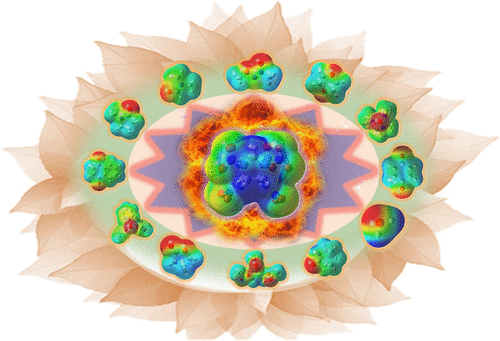当前位置:
X-MOL 学术
›
Cryst. Growth Des.
›
论文详情
Our official English website, www.x-mol.net, welcomes your feedback! (Note: you will need to create a separate account there.)
Review of the Intermolecular Interactions in Energetic Molecular Cocrystals
Crystal Growth & Design ( IF 3.8 ) Pub Date : 2020-08-26 , DOI: 10.1021/acs.cgd.0c01097 Guangrui Liu 1, 2 , Su-Huai Wei 2 , Chaoyang Zhang 1, 2
Crystal Growth & Design ( IF 3.8 ) Pub Date : 2020-08-26 , DOI: 10.1021/acs.cgd.0c01097 Guangrui Liu 1, 2 , Su-Huai Wei 2 , Chaoyang Zhang 1, 2
Affiliation

|
Energetic cocrystallization is thriving now and presents a promising perspective to create new energetic materials (EMs). In comparison with the single-component EMs, the creation of energetic cocrystals exhibits a greater significance of crystal engineering, whose central scientific issue is intermolecular interaction. This article reviews the current progress in studying the intermolecular interactions of energetic molecular cocrystals (EMCCs), as well as the molecular stacking and the thermodynamics for EMCC formation. The intermolecular interactions include hydrogen bonding (HB), π interactions, and halogen bonding. The strength of these interactions is found to be generally weak, similar to that of single-component energetic molecular crystals. By means of cocrystallization, the molecular stacking can be improved to be prone to layered stacking, facilitating low impact sensitivity. This could be feasible for alleviating the energy–safety contradiction of EMs. The driving force of the EMCC formation is thought to be the increase in entropy, because the EMCCs are in nature the products of an increase in randomness, with a small variation of intermolecular interactions in comparison with original pure components. Finally, the dependence of the properties of EMCCs on the compositions and molecular structures of original pure components is proposed to attract increasing attention, as it is a base for creating new EMs with tunable compositions, structures, and properties by way of crystal engineering.
中文翻译:

高能分子共晶体中分子间相互作用的综述。
高能共结晶现在正在蓬勃发展,并为创建新的高能材料(EM)提供了有希望的前景。与单组分EM相比,高能共晶体的产生显示出晶体工程的更大意义,其中心科学问题是分子间的相互作用。本文回顾了目前在研究高能分子共晶体(EMCC)的分子间相互作用以及EMCC形成的分子堆叠和热力学方面的最新进展。分子间相互作用包括氢键(HB),π相互作用和卤素键。发现这些相互作用的强度通常较弱,类似于单组分高能分子晶体的强度。通过共结晶 可以改善分子堆叠,易于分层堆叠,从而降低了撞击灵敏度。这对于减轻新兴市场国家的能源安全矛盾是可行的。认为EMCC形成的驱动力是熵的增加,因为EMCC本质上是随机性增加的产物,与原始纯组分相比,分子间相互作用的变化很小。最后,提议将EMCC的特性对原始纯组分的组成和分子结构的依赖性吸引越来越多的关注,因为它是通过晶体工程来创建具有可调组成,结构和特性的新EM的基础。认为EMCC形成的驱动力是熵的增加,因为EMCC本质上是随机性增加的产物,与原始纯组分相比,分子间相互作用的变化很小。最后,提议将EMCC的特性对原始纯组分的组成和分子结构的依赖性吸引越来越多的关注,因为它是通过晶体工程来创建具有可调组成,结构和特性的新EM的基础。认为EMCC形成的驱动力是熵的增加,因为EMCC本质上是随机性增加的产物,与原始纯组分相比,分子间相互作用的变化很小。最后,提议将EMCC的特性对原始纯组分的组成和分子结构的依赖性吸引越来越多的关注,因为它是通过晶体工程来创建具有可调组成,结构和特性的新EM的基础。
更新日期:2020-10-07
中文翻译:

高能分子共晶体中分子间相互作用的综述。
高能共结晶现在正在蓬勃发展,并为创建新的高能材料(EM)提供了有希望的前景。与单组分EM相比,高能共晶体的产生显示出晶体工程的更大意义,其中心科学问题是分子间的相互作用。本文回顾了目前在研究高能分子共晶体(EMCC)的分子间相互作用以及EMCC形成的分子堆叠和热力学方面的最新进展。分子间相互作用包括氢键(HB),π相互作用和卤素键。发现这些相互作用的强度通常较弱,类似于单组分高能分子晶体的强度。通过共结晶 可以改善分子堆叠,易于分层堆叠,从而降低了撞击灵敏度。这对于减轻新兴市场国家的能源安全矛盾是可行的。认为EMCC形成的驱动力是熵的增加,因为EMCC本质上是随机性增加的产物,与原始纯组分相比,分子间相互作用的变化很小。最后,提议将EMCC的特性对原始纯组分的组成和分子结构的依赖性吸引越来越多的关注,因为它是通过晶体工程来创建具有可调组成,结构和特性的新EM的基础。认为EMCC形成的驱动力是熵的增加,因为EMCC本质上是随机性增加的产物,与原始纯组分相比,分子间相互作用的变化很小。最后,提议将EMCC的特性对原始纯组分的组成和分子结构的依赖性吸引越来越多的关注,因为它是通过晶体工程来创建具有可调组成,结构和特性的新EM的基础。认为EMCC形成的驱动力是熵的增加,因为EMCC本质上是随机性增加的产物,与原始纯组分相比,分子间相互作用的变化很小。最后,提议将EMCC的特性对原始纯组分的组成和分子结构的依赖性吸引越来越多的关注,因为它是通过晶体工程来创建具有可调组成,结构和特性的新EM的基础。


























 京公网安备 11010802027423号
京公网安备 11010802027423号